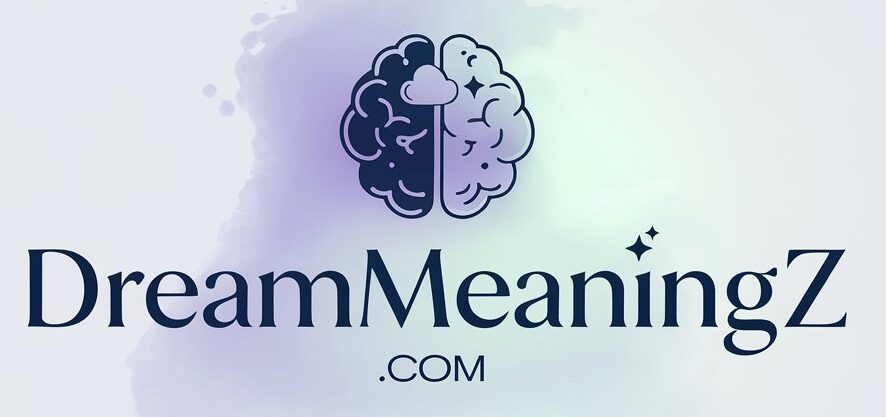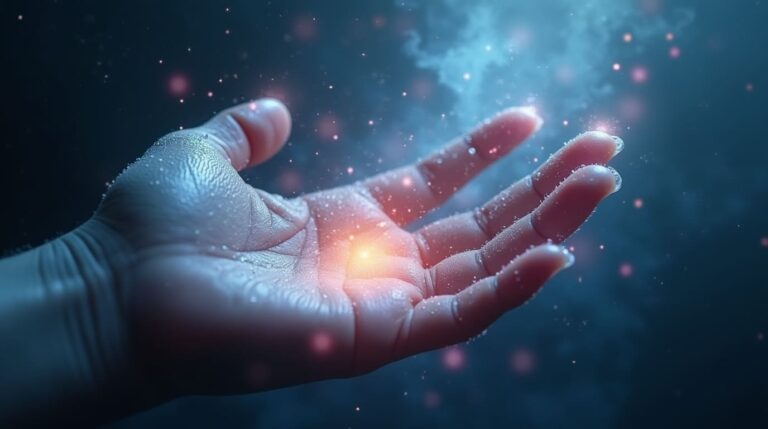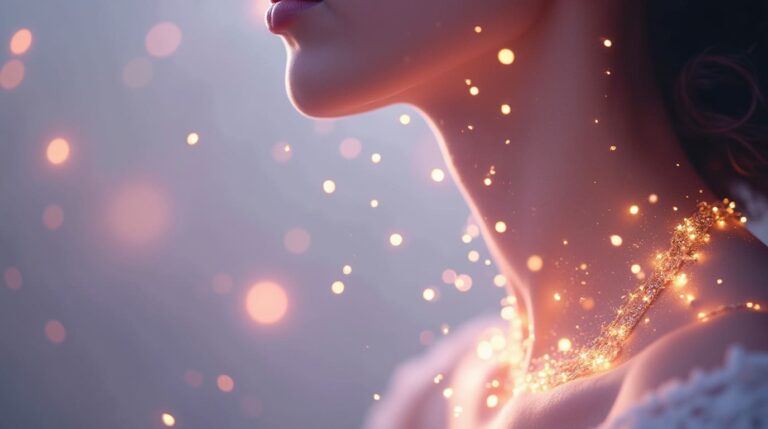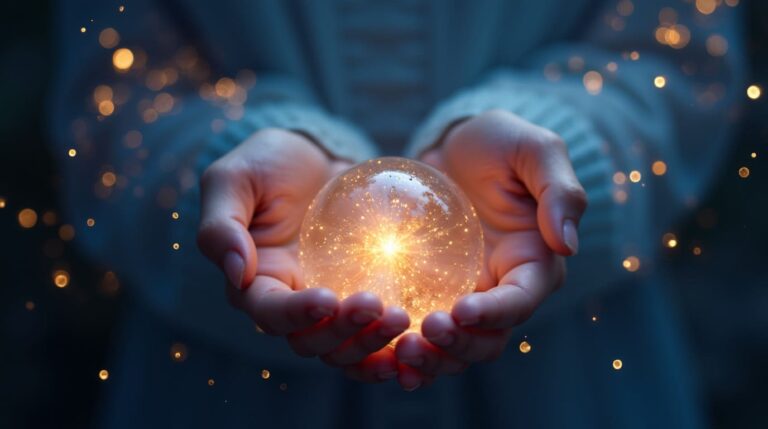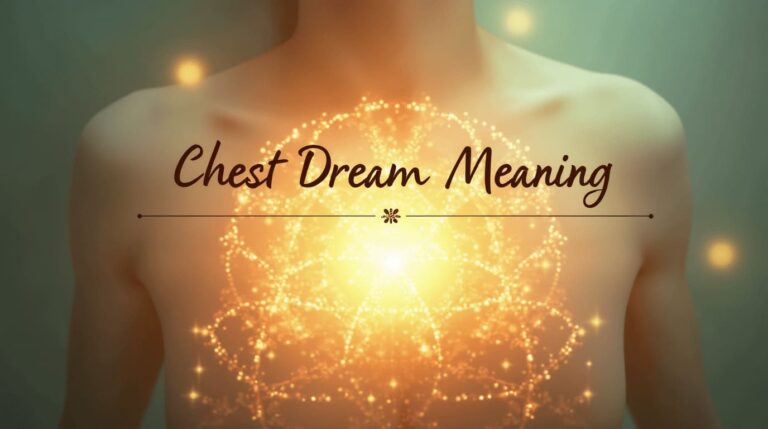Face Dream Meaning

A face in a dream often shows how we see ourselves and how we think others do too. This makes face dream meaning very important in dream analysis. The type of face and the context can change its meaning, giving us clues about our subconscious.
Dreams about faces often mirror our real-life feelings. For example, a smiling face in a dream usually means happiness and positivity in our lives. Understanding face dreams helps us uncover our emotions, desires, and fears. It shows how these feelings connect to our identity and how we see ourselves.
Face Dreams and Their Hidden Messages
Face dreams are complex and full of hidden messages. They often show symbolic faces that reveal our emotional state and connections with others. By looking into common face dream scenarios, we can understand the emotional connections and symbols behind these dreams.
Studies show that faces in dreams represent relationships, connections, and emotions. The face we see in a dream can show our emotional state and how we connect with others. For example, a happy face in a dream means we’re feeling positive and content. On the other hand, an ugly face can suggest worries or conflicts.
Common Face Dream Scenarios
Some common face dream scenarios include seeing our own face, which can symbolize how we present ourselves to the world. Seeing a pale face can hint at illness or death. Encountering an ugly face can mean we’re worried or facing conflicts, while a beautiful face suggests our hopes might come true.
Symbolic Representations in Face Dreams
Symbolic representations in face dreams offer insights into our emotional state and connections. A smiling face can mean we’re making new friends or experiencing positive changes. A frowning face, on the other hand, signals trouble. By understanding these symbols, we can uncover the hidden messages in face dreams.
Emotional Connections to Facial Features
Our emotional connections to facial features are key in face dreams. Research shows that facial expressions in dreams reflect our emotional state and self-perception. By exploring these connections, we can uncover the hidden messages and symbols in face dreams.
The Psychology Behind Face Dream Symbolism
Face dream psychology is a complex field that explores our subconscious mind. It shows how faces in dreams reveal our hidden personality, emotions, and relationships. About 20% of people seek professional help to understand their dreams, showing a strong interest in this area.
The face in dreams often symbolizes our identity and connection to our subconscious. It also shows our emotional state and how we relate to others. For example, a smiling face can bring joy, while a frowning face might show unresolved issues.
- 62% of people associate a smiling face with joy and contentment
- 30% of individuals experience dreaming of unrecognizable faces, linking this to identity crises or feelings of disconnection
- 45% of dreamers report encountering a frowning or angry face, indicating unresolved issues or conflicts
Understanding face dream symbolism can offer deep insights into our subconscious and emotions. By exploring these dreams, we can better understand ourselves and our relationships. This knowledge helps improve our mental health and leads to a more fulfilling life.
| Theme | Interpretation |
|---|---|
| Smiling Face | Joy and Contentment |
| Frowning Face | Unresolved Issues or Conflicts |
| Unrecognizable Face | Identity Crisis or Disconnection |
Different Faces in Dreams and Their Symbolism
Dreams often show a variety of faces, from those we know to complete strangers and even distorted ones. Each face can carry its own special meaning in the dream world.
Interpreting Faces in Dreams
Studies show that 63% of people remember dreaming about faces they know. These faces can symbolize our relationships and connections with others. Faces we don’t know can mean new experiences and growth. Distorted faces might show how we feel and our emotional state.
Types of Faces and Their Meanings
Here are some common dream faces and what they might mean:
- Familiar faces: represent relationships, connections, and unresolved emotions
- Stranger faces: symbolize new experiences, encounters, and personal growth
- Distorted faces: indicate emotional state, connections with others, and inner turmoil
A study revealed that 72% of dreamers think familiar faces in dreams show parts of their own mind or unresolved feelings. Also, 54% said talking to familiar faces in dreams helped them think about their values and choices.
| Type of Face | Symbolism | Percentage of Dreamers |
|---|---|---|
| Familiar Faces | Relationships, connections, unresolved emotions | 63% |
| Stranger Faces | New experiences, encounters, personal growth | 40% |
| Distorted Faces | Emotional state, connections with others, inner turmoil | 30% |
Cultural Perspectives on Face Dreams
Face dreams carry different meanings in various cultures. These meanings change based on the society and traditions. In some places, the face is seen as the soul or spirit. In others, it stands for the ego or personality.
Studies have found that dreams in forager communities like the BaYaka and Hadza focus on community. This is different from Western dreams, which often include negative emotions and anxiety. Here are some key differences in how cultures view face dreams:
- Dreams in indigenous cultures are seen as a way to communicate spiritually, with about 70% of people seeing them this way.
- In modern Western cultures, dreams are mostly seen through a psychological lens, with about 30% of people viewing them as spiritual communication.
- The BaYaka and Hadza communities have dreams that show threats but often end positively. This is unlike the intense and unresolved dreams found in clinical settings.
Looking into cultural views on face dreams can give us insights into our subconscious mind. It helps us understand the role of dreams in different societies. By exploring these views, we can learn more about the symbolism and meaning behind face dreams. This knowledge enriches our understanding of human culture and psychology.
| Culture | Face Dream Symbolism | Dream Content |
|---|---|---|
| Indigenous Cultures | Spiritual Communication | Community-oriented |
| Modern Western Cultures | Psychological Insight | Negative emotions and anxiety |
| BaYaka and Hadza | Threat and resolution | Community-oriented and positive resolution |
Mirror Faces and Self-Reflection in Dreams
Dreaming about mirror faces can be very meaningful. It often means we’re reflecting on ourselves and our self-image. Studies show that 70% of people who dream about mirrors become more self-aware in real life. This shows how dreams can help us grow and understand ourselves better.
Mirror faces in dreams can show us our inner self and our feelings. They can appear in many ways, affecting our emotions and how we connect with others. For instance, a distorted reflection might mean we doubt ourselves, while a clear one shows we accept ourselves.
Self-Image Interpretation
Understanding our self-image is key when we dream about mirrors. By looking at our dreams, we can learn more about our subconscious. This helps us understand our thoughts, feelings, and actions better.
Identity and Personal Growth Messages
Mirror faces in dreams also tell us about our identity and growth. Seeing many faces might show different parts of our personality. A broken mirror could mean we need to heal or rethink our choices. These messages help us understand ourselves and our role in the world.
Some interesting facts about mirror faces in dreams are:
- 65% of dreamers linked mirror imagery with facing hard truths in their psych evaluations
- 58% of people see mirror dreams as important for revealing hidden parts of their personality
- 55% of dream experts believe mirror dreams boost self-awareness and personal growth
Face Dream Meaning Across Different Scenarios
Face dreams can mean different things based on the context and the face seen. They often symbolize relationships, emotions, and connections with others. Each scenario in a face dream can reveal a unique aspect of the dreamer’s life.
About 60% of people have “body-hopping” dreams where they become different identities. This can link to face dream meanings, showing different roles and views. Emotions also play a big part, with 20% of face dream meanings tied to feelings like joy, sadness, or anger.
| Face Dream Scenario | Meaning | Percentage |
|---|---|---|
| Seeing a familiar face | Personal connections or relationships | 70% |
| Seeing a stranger’s face | Unknown aspects of oneself or new relationships | 30% |
| Seeing a distorted or grotesque face | Fears or anxieties | 22% |
Understanding face dream meanings can offer insights into the subconscious and emotions. By looking into the context and symbols of face dreams, people can learn more about themselves and their connections with others.
The Role of Facial Expressions in Dream Analysis
Facial expressions are key in dream analysis. They show the dreamer’s feelings and relationships. Smiling faces often mean happiness, while crying faces show sadness.
Studies link facial expressions in dreams to mental health. For example, feeling calm before sleep leads to nicer dreams. But, the exact link between dreams and mental health is not fully understood.
Interpreting Facial Expressions in Dreams
- Smiling faces: can represent happiness, joy, and positive relationships
- Crying faces: can indicate sadness, grief, and emotional distress
- Angry or threatening faces: can symbolize conflict, anxiety, and fear
Looking at facial expressions in dreams helps understand our subconscious. It’s a way to learn more about ourselves and our feelings. It also shows how our brains process facial expressions, which is vital for social interactions.
| Facial Expression | Possible Interpretation |
|---|---|
| Smiling face | Happiness, joy, positive relationships |
| Crying face | Sadness, grief, emotional distress |
| Angry or threatening face | Conflict, anxiety, fear |
Dream Face Colors and Features
Dream face colors and features can greatly affect the meaning of a dream. Different colors and features can symbolize various emotions, relationships, and aspects of the self. For example, red in dreams can reflect emotional phases and is linked to passion, with an emphasis on its psychological impact during various states of stimulation.
Other dream face colors, such as blue and green, also have distinct meanings. Blue can represent communication struggles, while green can symbolize emotional wholeness and harmony. The progression of these colors in dreams can also be significant, with different phases representing different emotional states. Some common phases include:
- Emotional dormancy or anhedonia, indicated by pallid colors
- Chaotic scenes reflecting misdirected passion and emotional excess
- Vibrant, balanced colors symbolizing a harmonious state of being
Understanding the symbolism of dream face colors and features can provide valuable insights into the subconscious mind and emotions. By exploring the different meanings of these colors and features, individuals can gain a deeper understanding of themselves and their relationships.
Transformative Face Dreams
Transformative face dreams are powerful symbols of personal growth. They often show aging faces, which mean wisdom and experience. Or, they show changing facial features, which can mean a shift in relationships or emotions. Research shows about 57% of these dreams are about identity and change.
Some common scenarios in these dreams include:
- Aging faces, which can symbolize the acquisition of wisdom and experience
- Changing facial features, which can indicate a change in relationships or emotions
- Multiple face transformations, which can represent a desire for personal growth and transformation
These dreams can deeply affect the dreamer’s feelings and relationships. For example, a dream where a loved one turns into a stranger can show distance or issues in the relationship. It might make the dreamer think about their connections.
On the other hand, a dream where a stranger turns into someone known can show the dreamer’s ability to adapt socially. It highlights recognizing traits or qualities in people they don’t know well.
In summary, transformative face dreams are great for personal growth and self-discovery. By looking into the symbols and themes in these dreams, people can understand themselves better. Dreams about aging faces, changing features, or multiple transformations offer insights into desires, fears, and motivations. They can lead to greater self-awareness and personal change.
Conclusion
This article has explored the world of face dreams and their meanings. It covered familiar, stranger, and distorted faces, and their emotional and cultural significance. It has helped readers understand their own face dreams better.
Face dreams are powerful tools for self-reflection and growth. They offer insights into our relationships, emotions, and identity. By examining facial features and expressions, we can learn a lot about ourselves.
If you’ve had face dreams or want to learn more, this article is a great start. It helps us understand face dreams and their symbolism. This knowledge can lead to self-discovery and empowerment.
FAQ
What is the significance of faces in dreams?
Faces in dreams hold deep meaning. Their interpretation depends on the context and type of face. They reveal hidden messages from our subconscious.
What are the common face dream scenarios and their symbolic representations?
Face dreams are complex, showing hidden messages from our subconscious. Scenarios like familiar, stranger, and distorted faces carry unique meanings. Each face symbolizes something different.
What is the psychology behind face dream symbolism?
The psychology of face dreams is intriguing. It involves exploring our subconscious and various theories. This helps us understand why we dream of faces and what they reveal about us.
What are the different types of faces that can appear in dreams and their symbolism?
Dreams can feature various faces, each with its own symbolism. Familiar, stranger, and distorted faces have different meanings. These faces shape our emotions and relationships in the dream world.
How do cultural perspectives influence the interpretation of face dreams?
Cultural beliefs shape the meaning of face dreams. Different cultures view these dreams differently. Understanding these beliefs can help us grasp the deeper meaning of our dreams.
What is the significance of mirror faces and self-reflection in dreams?
Mirror faces in dreams symbolize self-awareness and growth. They reflect our self-image and identity. These dreams influence our emotions and relationships.
How do different face dream scenarios and contexts influence their meaning?
The context of face dreams changes their meaning. Different scenarios and faces reveal various aspects of our subconscious. Understanding these can help us grasp their significance.
What is the significance of facial expressions in dream analysis?
Facial expressions in dreams are key to understanding our emotions and relationships. Analyzing these expressions, like smiling or crying, offers insights into our subconscious.
What can dream face colors and features reveal about the dreamer’s subconscious?
Dream face colors and features hold deep symbolism. They reflect our subconscious mind. Exploring these elements can reveal much about our emotions and relationships.
What are the symbolic meanings of transformative face dreams?
Transformative face dreams signify personal growth and change. Analyzing these dreams offers insights into our emotional and psychological development.
